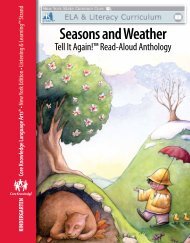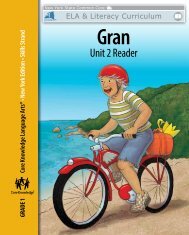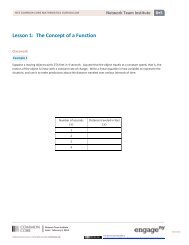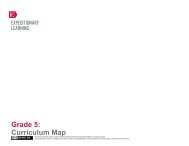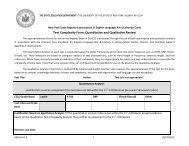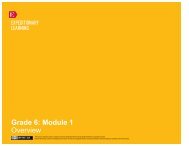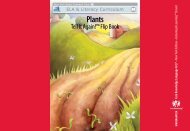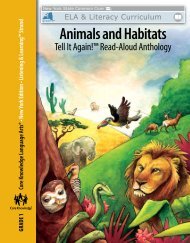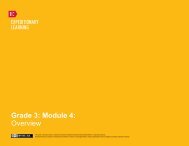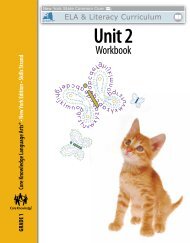Tell It Again! Read-Aloud Anthology - EngageNY
Tell It Again! Read-Aloud Anthology - EngageNY
Tell It Again! Read-Aloud Anthology - EngageNY
You also want an ePaper? Increase the reach of your titles
YUMPU automatically turns print PDFs into web optimized ePapers that Google loves.
7 [Point to the ruts in the image.]<br />
Wagon ruts are deep grooves that<br />
the wagon wheels make in the<br />
earth.<br />
Territory. 7 After many wagons followed one path, the ruts became<br />
so deep that it was very difficult or even impossible for wagons to<br />
travel without getting stuck.<br />
Show image 6A-5: Abigail looking at Native Americans in the distance<br />
8 What is Indian Territory?<br />
9 So how did the Native Americans<br />
feel about the settlers moving<br />
west?<br />
As much of the Oregon Trail went through what was known as<br />
“Indian Territory,” the travelers encountered Native American tribes<br />
along the way. 8 Sometimes the Native Americans were fearful that<br />
the settlers would decide to stop traveling and just make farms<br />
right there on their lands. 9<br />
Show image 6A-6: Mr. Lawrence and Captain Ward discussing the trail<br />
10 Degree is a unit of measuring<br />
temperature. A degree is also<br />
an official document given<br />
to someone who successfully<br />
completed a series of classes at a<br />
college or university.<br />
11 A scout is a person sent ahead<br />
of a traveling group to gather<br />
information about what lies ahead.<br />
Why do you think it was important<br />
to have a scout?<br />
On this particular day, the wagon train moved slowly in onehundred-degree<br />
heat. 10 Thomas Lawrence, a settler and the<br />
wagon train’s scout, rode quickly over to the leader of the wagon<br />
train, Captain Jeremiah Ward, to report on the trail ahead. 11<br />
“There’s water half a mile ahead, but it’s not fit for drinking,” Mr.<br />
Lawrence reported. “We ought to reach Sweetwater River by noon,<br />
though, and that water is safe.”<br />
Captain Ward nodded his thanks, “Good work, Thomas.”<br />
Show image 6A-7: Preparing to cross the river<br />
When the wagons reached the Sweetwater River, everyone<br />
enjoyed a long, cool drink. Captain Ward ordered, “First we’ll take<br />
the wagons and the oxen across the river. Then we’ll swim the<br />
extra horses over. The cattle will go last.”<br />
To lighten their loads for the crossing, families removed any<br />
heavy objects from their wagons. The settlers brought many of<br />
these items to have in their new homes to remind them of their<br />
homes back in the East. Now, many of those items they’d hoped<br />
to have in their new homes had to be left behind.<br />
Westward Expansion 6A | Westward on the Oregon Trail 93<br />
© 2013 Core Knowledge Foundation




